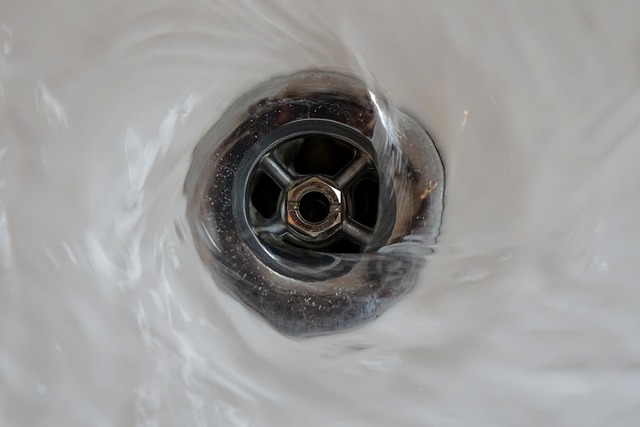How Dishwashers Support Modern Households and Daily Living
Dishwashers have become essential appliances in many homes, offering convenience, efficiency, and improved hygiene. For households managing busy schedules or facing physical limitations, these machines provide more than just clean dishes—they deliver time savings, reduced physical strain, and enhanced sanitation that manual washing often cannot match.

The Importance of Dishwashers for Seniors
For older adults, maintaining independence in daily tasks is crucial for quality of life. Dishwashers play a significant role in this regard by reducing the physical demands associated with cleaning dishes. Bending over sinks, standing for extended periods, and handling hot water can be challenging for seniors with arthritis, joint pain, or mobility issues. Modern dishwashers eliminate much of this strain by allowing users to load dishes at a comfortable height and let the machine handle the scrubbing and rinsing. Additionally, dishwashers reduce the risk of slips and falls from wet floors, a common household hazard for older individuals. The convenience factor extends beyond physical benefits—dishwashers help seniors maintain their routines without relying heavily on caregivers or family members for assistance with kitchen cleanup.
Advanced Cleaning and Sanitization Features
Today’s dishwashers incorporate sophisticated cleaning technologies that surpass what manual washing can achieve. High-temperature wash cycles, often reaching 140-160 degrees Fahrenheit, effectively kill bacteria and germs that may linger on dishes, cutting boards, and utensils. Many models include sanitization cycles certified by organizations like NSF International, ensuring that dishes meet strict hygiene standards. Advanced spray arm systems deliver targeted water jets that reach every corner of the dishwasher interior, removing stubborn food particles and grease. Some dishwashers feature soil sensors that detect how dirty dishes are and automatically adjust water temperature, cycle length, and detergent usage accordingly. Steam cleaning options provide an extra layer of sanitization, particularly useful for baby bottles, jars, and items requiring thorough disinfection. These features make dishwashers invaluable for households prioritizing health and cleanliness, especially those with young children, immunocompromised individuals, or anyone concerned about foodborne illness prevention.
Customizable Racks and Loading Flexibility
Modern dishwashers offer remarkable flexibility in how dishes and cookware can be arranged. Adjustable racks allow users to modify interior space based on what needs cleaning—raising or lowering upper racks to accommodate tall glasses, large pots, or serving platters. Fold-down tines provide additional versatility, creating open spaces for bulky items like mixing bowls or baking sheets. Third racks, now common in many models, add dedicated space for utensils, small bowls, and cooking tools, freeing up lower racks for plates and larger items. Some dishwashers include specialized zones for delicate glassware with gentler spray patterns, while others feature dedicated sections for heavily soiled pots and pans requiring more aggressive cleaning. Removable silverware baskets and adjustable dividers help organize utensils efficiently, preventing nesting that can block water flow. This customization ensures optimal cleaning results regardless of load composition and maximizes the number of items that can be washed in a single cycle, improving overall efficiency.
Energy and Water Efficiency Benefits
Contrary to common misconceptions, dishwashers typically use less water than hand washing. Energy Star certified models consume approximately 3-5 gallons per cycle, while hand washing the same load can use 20 gallons or more. Modern dishwashers also heat water more efficiently than most household water heaters, reducing energy consumption. Eco-friendly wash cycles extend cleaning time but use lower temperatures and less water, providing an environmentally conscious option for lightly soiled loads. The cumulative savings on water and energy bills can be substantial over the appliance’s lifespan, making dishwashers both economically and environmentally sensible. Additionally, using dishwashers during off-peak electricity hours can further reduce energy costs in areas with time-of-use utility rates.
Selecting the Right Dishwasher for Your Needs
Choosing an appropriate dishwasher involves considering household size, kitchen layout, and specific cleaning requirements. Capacity is measured in place settings, with most standard models accommodating 12-16 place settings. Compact or drawer-style dishwashers suit smaller households or kitchens with limited space. Noise levels, measured in decibels, matter particularly in open-concept homes—quieter models operate at 40-45 dB, comparable to a library. Control panel placement varies between front-facing buttons and top-mounted controls hidden when the door is closed, affecting both aesthetics and accessibility. Finish options include stainless steel, black, white, and panel-ready designs that accept custom cabinetry fronts for seamless kitchen integration. Warranty coverage and manufacturer reputation should factor into purchasing decisions, as dishwashers represent significant investments expected to last 10-15 years with proper maintenance.
Maintenance and Longevity Tips
Proper care extends dishwasher lifespan and maintains cleaning performance. Monthly cleaning of filters prevents food buildup that can cause odors and reduce efficiency. Running an empty cycle with dishwasher cleaner or white vinegar removes mineral deposits and grease accumulation. Inspecting and cleaning spray arms ensures unobstructed water flow. Checking door seals for cracks or damage prevents leaks. Using appropriate detergents formulated for automatic dishwashers protects internal components from damage caused by excessive suds or harsh chemicals. Scraping large food particles from dishes before loading prevents clogs, though pre-rinsing is generally unnecessary with modern models. Addressing minor issues promptly, such as unusual noises or drainage problems, prevents more serious malfunctions requiring expensive repairs.
Conclusion
Dishwashers have evolved from luxury items to essential household appliances that deliver tangible benefits in convenience, hygiene, and efficiency. For seniors and individuals with physical limitations, they provide crucial support for maintaining independence. Advanced sanitization features ensure superior cleanliness compared to manual methods, while customizable loading options accommodate diverse dishware and cookware. The environmental and economic advantages of reduced water and energy consumption make dishwashers practical choices for modern households. By understanding available features and selecting models aligned with specific needs, homeowners can maximize the value these appliances bring to daily life.




